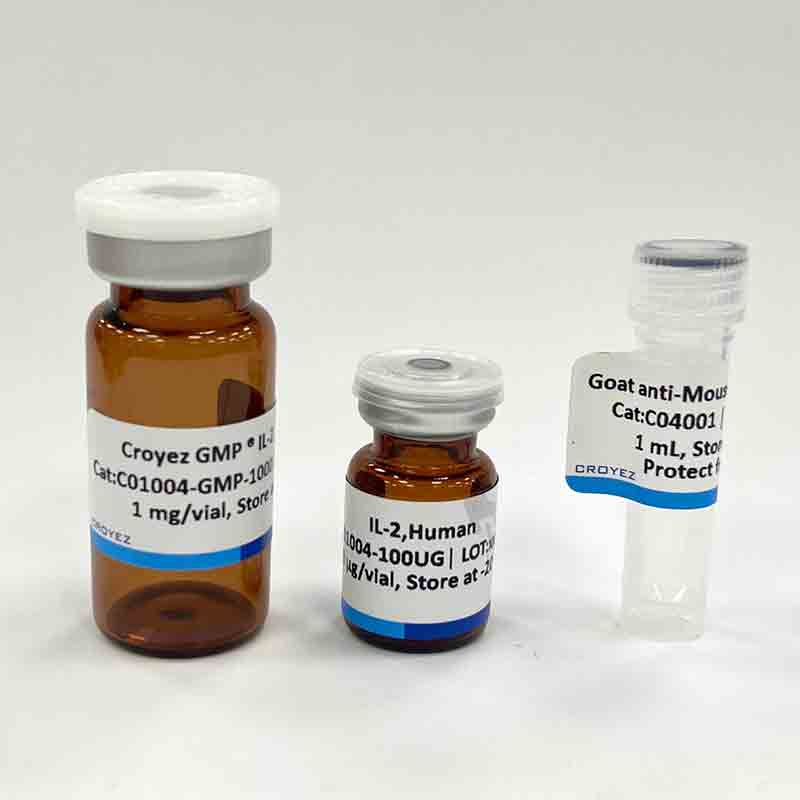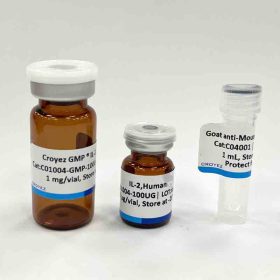Interleukin-15 (IL-15) is a cytokine with structural similarity to Interleukin-2 (IL-2). Like IL-2, IL-15 binds to and signals through a complex composed of IL-2/IL-15 receptor beta chain (CD122) and the common gamma chain (gamma-C, CD132). IL-15 is secreted by mononuclear phagocytes (and some other cells) following infection by virus(es). This cytokine induces cell proliferation of natural killer cells; cells of the innate immune system whose principal role is to kill virally infected cells.
Sequence:
NWVNVISDLKKIEDLIQSMHIDATLYTESDVHPSCKVTAMKCFLLELQVISLESGDASIHDTVENLIILANNSLSSNGNVTESGCKECEELEEKNI
KEFLQSFVHIVQMFINTSLE with polyhistidine tag at the N-terminus
Source:
Escherichia coli
Endotoxin level:
<0.01 EU per 1 μg of the protein by the LAL method.
Activity:
Measure by its ability to induce MO7e human megakaryocytic leukemic proliferation. The ED50 for this effect is 0.5-3 ng/mL.
The specific activity of recombinant human IL-15 is approximately 1.5 x 108 IU/mg.
Measure by its ability to induce NK cells proliferation. The ED50 for this effect is 5-35 ng/mL.
Purity:
>95% as determined by SDS-PAGE analysis. Purified by Ni-NTA chromatography.
Formulation:
The protein was lyophilized from a solution containing 1X PBS, pH 8.0.
Reconstitution:
It is recommended to reconstitute the lyophilized protein in sterile H2O to a concentration not less than 100 μg/mL and
incubate the stock solution for at least 20 min to ensure sufficient re-dissolved.
Storage:
Lyophilized protein should be stored at -20°C. This product is stable for one year upon receipt, when handled and stored as instructed. Upon reconstitution, protein aliquots should be stored at -20°C or -80°C. Avoid repeated freeze/thaw cycles.
Note:
Please use within one month after protein reconstitution.





